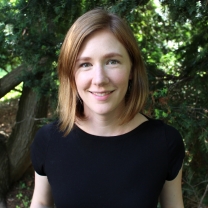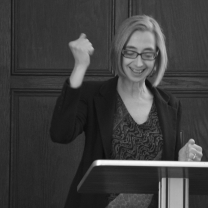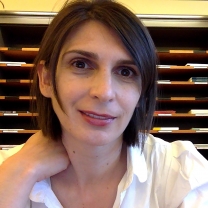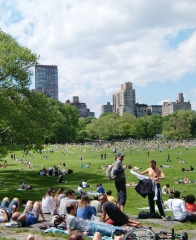 / Of Cupcakes and Climate Change
Subscribe
/ Of Cupcakes and Climate Change
Subscribe

One of the most common questions that I get when people learn that I study global climate change is: “how can we solve it?” Spoiler alert: there is no simple solution. Even if we instantly stopped releasing the compounds that cause global warming, we would continue to experience climate change for many decades due to the slow inertia of the Earth system redistributing excess heat. And since it doesn’t look like we’ll be dropping fossil fuels cold turkey anytime soon, we’re only making the problem worse every day. While this might sound like a spiral of despair, don’t lose hope yet! While part of the answer to solving climate change is that we need to stop producing the things that cause it (mitigation), a second and equally important part of the answer is that we need to learn to live with it (adaptation). As individuals, we might feel powerless to influence the global action that mitigation requires. But, when it comes to effective adaptation, what is needed is local knowledge and energy. Here, we can make a difference.
Mitigating climate change is a global problem. Current climate change is driven by the rapid increase in greenhouse gases within our atmosphere from burning fossil fuels (coal, oil, and gas) for energy. Greenhouse gases warm the planet because their molecular structure absorbs and re-emits heat energy. This is a global problem because the lifetime of greenhouse gases in the atmosphere is much longer than the time that it takes the atmosphere to completely mix gases in the air surrounding our planet. Earth’s atmosphere is an extremely efficient blender, whipping air from the North Pole to the South Pole within the timespan of one year. Once released, greenhouse gases stay in the atmosphere for decades to centuries. This means that regardless of where the gases are emitted, they are quickly mixed and dispersed around the world, causing global warming. This is why part of the solution to our climate change problem is to stop releasing the greenhouse gases that cause global warming in the first place.
But this is only half the story. When the Earth system gets extra energy from greenhouse gases, it has to do something with this extra energy. The Earth system redistributes this extra energy by creating stronger storms, extreme heat waves, polar vortexes, and droughts. Slowly adding heat to the Earth system sets off amplifying and complex regional feedbacks that we are frantically trying to understand before the impacts of these feedbacks devastate ecosystems and communities.
Last weekend, as a special treat, I let my toddler eat a cupcake. This led to a frenetic, joyful boost of energy to his “system.” It would have been delusional to think that his behavior would be consistent across pre- and post-cupcake states. I thus delivered the treat when he could disperse his extra energy by running chaotic laps outside. It would have been equally unreasonable to think that he would calmly re-equilibrate back to his pre-cupcake state without a sugar-low tantrum first. Like our bodies, our planet is a complex system where the boost of energy from global warming is often dispersed in high-energy, relatively unpredictable events that rarely return calmly to equilibrium. Unlike our bodies (hopefully), global warming is pushing the Earth system further and further, feeding it cupcake after cupcake, before it even has a chance to digest the previous cupcake, creating more unpredictable energy bursts or tantrums. And to add to this complexity, the manner in which the Earth system disperses its extra energy depends on where you live.
Climate change impacts manifest at smaller spatial scales than the mechanisms that produce global warming. For example, since 1958 in the northeastern U.S., we have experienced a widespread rise in total annual precipitation and an alarming 71% increase in the amount of precipitation falling in heavy rainfall events. This increase in the size and amount of rainfall events has created a new flood risk for the northeastern U.S. in areas that were not previously flood-prone. In contrast, in the southwestern U.S. precipitation changes have followed a more nuanced pattern that depends on local factors like topography and surface water distribution, with extreme precipitation shortages in some areas and more precipitation in others. Due to geographic variability in climate change impacts, effective climate change adaptation strategies for in the northeastern U.S. are going to look very different from those in the southwestern U.S.
Because climate change impacts are more context-dependent than the mechanisms driving global warming, climate change adaptation needs to be local. Here is where individuals and communities can work to solve climate change. Global treaties aimed at slowing the rate of global warming are critical, but move at a glacial pace. More rapid progress can be made, however, in preparing for climate change at regional and local scales. Moreover, because global warming is already happening and will continue even if we stop releasing greenhouse gases, we must take adaptation efforts seriously, and quickly.
Local adaptation also offers the opportunity to examine climate change impacts through their intersection with how structural injustice shapes the resilience of infrastructure within communities. For instance, a key part of adapting to local climate change impacts is managing risk for uncertain, but devastatingly extreme events, like hurricanes. Those who are already socioeconomically marginalized often end up living in areas that are likely to experience more intense physical destruction from extreme events. And furthermore, recovery after climate change disasters is most challenging for people with limited financial mobility. Strategies from public health research and advocacy could help to inform climate change adaptation, since this field has made strong progress in studying and developing solutions for complex problems at the intersection of people and the environment. Thinking critically about how race, class, gender, and ability shape the experience of climate impacts within communities, and including diverse perspectives during adaptation planning, are critical dimensions for developing effective and equitable solutions for local adaptation.
Describing how to mitigate global warming is clear—stop emitting greenhouse gases—but is challenging since fossil fuels are embedded in our global economy. Describing how to adapt to climate change is scientifically equivocal—it depends —but adaptation presents an urgent opportunity for communities to shape their future for the better in the face of rapid and unpredictable change.
Photo Credit: Birdiegirl, "Cupcake icon flat," via Shutterstock, 19 September 2017.








